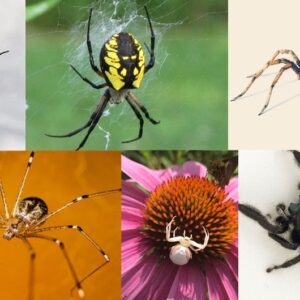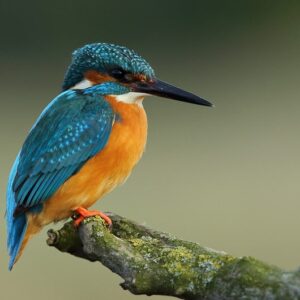
In the captivating realm of evolutionary connections, one question reverberates: what is the closest living relative to dinosaurs? Birds are believed to be the closest living relatives to dinosaurs. So, when you look at your two-legged chicken walking in your backyard in search of worms, insects, grains, and seeds, just know that you’re staring at a direct descendant of the dinosaur. In this article, you’ll learn how birds relate to the world’s most remarkable predator.
4 Closest Living Relative to Dinosaurs
As mentioned above, birds are the only known living creatures that share a direct lineage with dinosaurs. This fact begs several critical questions that you must find answers to in order to understand how the two relate.
Some of the common questions asked about this affiliation include: Did dinosaurs really look like birds? If so, why were they referred to as the most extraordinary marauders in the world? And why did their direct descendants become so trifling and harmless? What changed?
It’s important to mention that dinosaurs belonged to the Tyrannosaurus rex family. Animals belonging to this family were known to be large and completely terrifying. So, one would be forgiven for assuming that the direct descendants of dinosaurs would be gigantic and terrifying.
Surprisingly, Tyrannosaurus rex – the king of this family – shares a significant amount of DNA with birds, particularly contemporary chickens. But aside from birds, there are several other animals whose lineage is directly linked to that of dinosaurs. Here are the most common types of animals that are known to be close relatives of dinosaurs.
1. Birds

Image source: Pinterest
About 201.3 million years ago, at the beginning of the Jurassic Age, the animal kingdom was reigned over by dinosaurs. These were an assorted cluster of reptiles of the clade Dinosauria. Birds are believed to have evolved from this clade after the late Jurassic era.
They were the only relatives of dinosaurs to have survived the Cretaceous-Paleogene extinction event some 66 million years ago. It’s also important to note that dinosaurs are divided into two main groups: avian dinosaurs and non-avian dinosaurs.
The avian dinosaurs group comprises birds while the non-avian dinosaurs group is made up of the rest of the dinosaurs. Paleontologists have already discovered more than 900 unique genera and over 1,000 different types of non-avian dinosaurs. These species are scattered across the globe, but some of them are already extinct.
Before the 20th century, birds weren’t considered dinosaurs. Scientists believed dinosaurs to be cold-blooded and inactive. But latest studies have revealed that dinosaurs were quite active with a high metabolism and various alterations for social interactions.
It’s also clear that some dinosaurs were herbivorous and others carnivorous. But all of them laid eggs and built nests. The new evidence further cements the belief that birds are direct relatives of dinosaurs.
It’s also important to mention that the belief that all non-avian dinosaurs were gigantic and dreadful predators is a misconception. Evidence has shown that some non-avian dinosaurs were fairly small. The surviving descendants of dinosaurs, especially avian dinosaurs, are fairly small because of their flight constraints.
Some of the smallest dinosaurs measured about 20 inches in length. Aside from chickens and ducks, there are other types of birds whose characteristics are strikingly similar to those of dinosaurs. For example, ostriches are weird-looking birds with long legs and necks.
These wild birds are closely related to a popular species of dinosaur that dates back to the Cretaceous epoch. A male ostrich can grow up to 2.8 meters tall and weigh about 140 kilograms, while a female adult ostrich can grow up to 2 meters tall and weigh about 130 kg.
Their shape and size resemble those of the Velociraptor, a popular species of dinosaur which lived in Asia in the late Cretaceous era about 75 million years ago.
2. Crocodiles

Image source: Pinterest
One of the common types of non-avian dinosaurs is the crocodile. It belongs to a group of dinosaurs commonly referred to as the archosaurs or the ruling reptiles. The first archosaurs were discovered during the Early Triassic era some 250 million years ago.
But the modern-day crocodiles evolved from the archosaurs about 95 million years ago during the late Cretaceous era. By this time, the archosaurs had evolved into alligators. So, the contemporary crocodiles descended from alligators.
Alligators had shorter limbs than archosaurs, which forced them to crawl lower to the ground. They also had longer snouts and powerful tails. It’s interesting to note that aside from crocodiles, the other surviving types of archosaurs are birds, especially ducks.
3. Sea Turtles

Image source: Pinterest
Evidence shows that sea turtles are close descendants of dinosaurs. Scientists refer to them as the cousins of dinosaurs. Sea turtles are believed to have developed alongside dinosaurs and emerged as a unique species of turtles some 110 million years ago.
Initially, especially in the Cretaceous era, sea turtles were gigantic creatures, some of which grew to about 4 meters long and had flippers spanning about 5 meters on each side. Sea turtles belong to the Archosauria family of dinosaurs, which is closely related to birds and crocodiles. They’re also related to lizards.
Another aspect of sea turtles that connects them to the family of dinosaurs is the fact that they‘re reptiles. Scientists claim that the two animals shared an ancestor, who was most probably a reptile creature with the features of a lizard. This claim is based on the fossils discovered during the Mesozoic era.
The overall size and shape of a sea turtle are fairly similar to those of many species of dinosaurs, especially the non-avian dinosaurs.
4. Tuatara Lizards

Image source: Pinterest
The Tuatara lizard is another close relative of dinosaurs. It’s the only surviving member of its lineage, which dates back to the Mesozoic era. It was in this era that reptiles, including dinosaurs survived.
So, the ancestors of tuatara lizards evolved alongside those of dinosaurs. The interesting thing about this type of lizard is that it survived all the geological mayhems that locked the universe, including the shuffling of modern-day continents. It also survived the proliferation of mammals and large, predatory birds.
Modern-day tuatara lizards are only found in New Zealand and are quite few in number. Scientists aren’t sure how much longer these lizards will survive. That’s why conservationists in New Zealand are working round the clock to promote the controlled proliferation of tuatara lizards.
Through these efforts, dozens of tuatara lizards have been born in “captivity”. These juveniles are expected to re-colonize their known habitats in New Zealand from which they’ve already vanished. One of the most fascinating things about a tuatara lizard is the fact that it doesn’t have external ears.
In the family of amniotes, tuatara has the most primeval hearing organs. It lacks eardrums and earholes. Its middle ear opening is filled with loose tissue. But it can still make out low frequencies.


